Dukinfield
Dukinfield Town Centre
Services in Dukinfield
Tameside Image Archive
Take a look at the historical images of Tameside we have available.
Dukinfield Crematorium and Cemetery
For information on the crematorium and cemetery, including bereavement services.
Dukinfield Town Hall
For information on the town hall, including booking it as a venue.
Coat of Arms
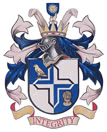 Quarterly azure and argent, a cross pointed and voided quarterly of the last and sable between in the first quarter a raven close and in the fourth a garb, both Or. Crest: Out of a crown palisado Or, a cubit arm, vested azure, cuff argent, hand proper holding an escutcheon of the second charged with a sun in splendour of the first, between two ostrich feathers of the third. Motto: Integrity. Granted: 24 March 1900.
Quarterly azure and argent, a cross pointed and voided quarterly of the last and sable between in the first quarter a raven close and in the fourth a garb, both Or. Crest: Out of a crown palisado Or, a cubit arm, vested azure, cuff argent, hand proper holding an escutcheon of the second charged with a sun in splendour of the first, between two ostrich feathers of the third. Motto: Integrity. Granted: 24 March 1900.
Dukinfield's armorial bearings are based on those of the Dukinfield family: the pointed cross is its symbol, and the arm holding a sun is part of the family arms. The raven represents the supposed derivation of the name Dukinfield from 'Doken', meaning a raven. The sheaf and feathers are from the arms of the Princes of Wales, Earls of Chester.
Dukinfield Centenary Souvenir
Commemorating the 100th anniversary of the granting of the town's Charter of Incorporation as a borough, in 1899. Sponsored by the Roland Bardsley Group of CompaniesHistory of Dukinfield
Early History
The name of this municipal borough probably means 'ducks' open-land', although it is traditionally taken to commemorate a victory of Saxons over Danish invaders. From the Middle Ages, Dukinfield was in the parish of Stockport and in the administrative field of Macclesfield.
After the Norman Conquest, Dukinfield became part of two Norman estates, successively, and in the second half of the 12th century the presiding family took the name De Dokenfield. A hall was built in the middle of the 12th century, but was replaced around 1500, the last part of which was demolished in 1950. This was the seat of the Lord of the Manor until the middle of the 18th century.
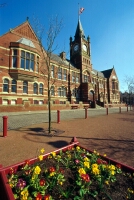 Industrialisation
Industrialisation
Where Dukinfield was not thickly wooded (at one time the timber was the prerequisite of the Lords of Stockport), there was good pasture and meadow land. In the 16th century Dukinfield was - with Ashton - the chief township east of Manchester and Stockport. In 1827 Dukinfield was still the centre of an extensive agricultural industry, supplying Manchester and Stockport with vegetables. Prosperity also came from coal production which began in the early 17th century and which was dramatically increased towards the end of the 18th century by the need to supply the steam engines in the cotton mills of the Industrial Revolution. In the 19th century there were also iron-based industries, there being some iron-ore and local demand.The development of local communications was a prime stimulus to Dukinfield trade and this took the form of more bridges being built across the Tame, the construction of the Peak Forest, Ashton and Huddersfield Canals and the laying of the Sheffield, Ashton and Manchester Railway, which was started in 1838, with its Stalybridge branch line, which passed through Dukinfield.
This enormous growth of industry, especially the cotton trade, had the most profound effect on the people of Dukinfield. A contemporary observer said of the cotton trade in 1794 that 'while it affords employment to all ages, it has debilitated the constitutions and retarded the growth of many, and made an alarming increase in the mortality'. The rural aspect of Dukinfield was quickly marred and finally destroyed. After an absence of nearly 60 years the missionary Robert Moffat returned to Dukinfield in 1875 and wept at the sight. "What a difference. What a change! My heart almost broke when I thought of the past and compared it with the present."
Poorly managed industrial change led to social disturbances, including the widespread industrial riots of 1812 (the Luddite Riots) and 1842 (the Plug Riots). There were also riots in 1858, 1863 and 1868.
Dukinfield was included in the Ashton-under-Lyne Poor Law Union formed in 1837, but this was virtually inoperative for 10 years and then largely unsuccessful, although the workhouse, which was established in Ashton, accommodated about 500. Welfare and services for the whole community were gradually and belatedly introduced over the years; in the 1840s shops and mills came to be partly lit; in 1857 the Dukinfield Local Board of Health was formed; the police station was started in 1858; in 1870 there was a move to obtain a decent water supply.
Attempts to alleviate the plight of the poor were made by religious people, largely through the agency of education. The religious communities established educational institutions throughout the 19th century, among them the Old Chapel Sunday School (1800), Dukinfield Village Library (1833) and St. Mark's day schools (1843). This was a symptom of a very lively 19th century religious scene, originally grounded in Nonconformity with significant Moravian, Presbyterian, Unitarian and Methodist elements. Catholicism, too, began to revive in the 1820s and Anglicans likewise on an even larger scale in the 1830s and 1840s.
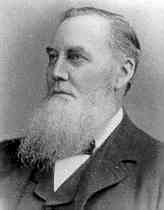
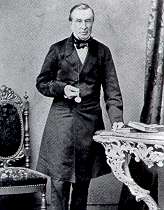 Characters
Characters
Many of the town's developments were typified in the careers of three of the most remarkable men of Dukinfield.John Astley (1724-1787) to whom fell the Dukinfield Estate, who built Dukinfield Lodge, pursued locally by coal, iron and cotton industries and benefited the town
Samuel Robinson (1794-1884), a Unitarian, scholar and industrialist, who founded the Dukinfield Village Library in 1833 and who has been called the 'foremost promoter of education in the district'
Daniel Adamson (1820-1890), the engineer-industrialist who was the chief promoter of the Manchester Ship Canal and whose company, founded in 1842, achieved a world-wide reputation.
The Twentieth Century
At the turn of the century Dewsnap and Astley Deep pits closed down, like many of the collieries in the area , and, as the present century progressed, the cotton industry declined, to be largely replaced by light engineering.Trams monopolised transport in the 20th century (the first was introduced in 1904) until 1925, when the first motor bus was introduced. In 1899 the Charter of Incorporation was granted to Dukinfield by which it achieved town council government and a town hall which was opened in 1901. In 1902 Dukinfield Park was opened and the toll on Alma Bridge abolished. In 1922 the Chapel Hill War Memorial to 460 soldiers and sailors was unveiled. In 1929 the child welfare centre was opened and the first electrically equipped railway coach was built at Dukinfield.
Facts About Dukinfield
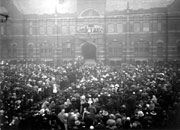
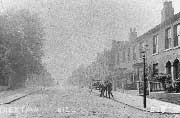
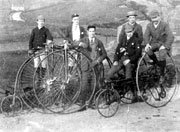
A comprehensive selection of historical photographs can be found at www.tameside.gov.uk/history.
- In 2001 Dukinfield Register Office recorded 2,511 births, 2,439 deaths and 411 marriages.
- St Luke's Church, an imposing red-brick building was licensed for divine service in 1889, and was consecrated in 1902. It has a stained glass window in memory of Daniel Adamson, first chairman of the Manchester Ship Canal Company.
- The Adamson Military Band was formed in 1888 and named itself after the engineer, Daniel Adamson (1820-1890), only begetter of Daniel Adamson & Co. In 1921 the band won first prize at the Military Band Championship in Belle Vue.
- Globe Square was once the hub of the Dukinfield Hall hamlet which began to be demolished after the war. The war memorial, unveiled on 20th March 1920 remembers the men of the district who served their country in the 1914/18 conflict.
- St. Helens Mill was built in 1819, as a cotton mill, but it is more than a century since it was used for that purpose. For many years it was home to the Compo company which manufactured washing powder, and which was owned by Henry Pratt, the first Mayor of Dukinfield.
- The Pyramid Snooker Hall on King Street used to be the Princess Cinema from 1913 until 1960. At one time Dukinfield could boast three cinemas. The first, the Palladium on Crescent Road which closed in 1958, and also the Oxford at the corner of Foundry Street and Oxford Road which finally closed in 1966.
- The Moravians first came to Dukinfield in the 1740's and built their first church there in 1751.
- The Duckenfield family were lords of Dukinfield from the thirteenth century until the mid-eighteenth century. Robert, the son of Colonel Robert Duckenfield, was created the first baronet of Dukinfield in 1665 from which point the family gradually acquired more land in northern and north-eastern Cheshire. In the mid-seventeenth century the family owned the whole of Dukinfield, amounting to 1690 acres, and lands in other Cheshire townships. The title of baronet, however, became separated from the Dukinfield estates on his death in 1758 and passed to a descendant of the second baronet. The last to hold the title was the seventh baronet, the Reverend Henry Robert Dukinfield who died in 1858.
- Dukinfield Park was opened in 1902 at a cost of £15,000 with balustrades and terraces being used to overcome a difference of 80ft from east to west. The sculpture by the main gates replaces a drinking fountain, presented by Sir Arthur and Lady Nicholson, which was audaciously stolen.
- A Blue Plaque at Plantation Farm, Dukinfield celebrates the life of Mary Moffat. It was unveiled in July 1998 by Councillor George Hatton JP.
- Once located near the Dewsnap Sidings, off King Street in Dukinfield, the Astley Deep Pit Mine was reputed to be the deepest coal mine in the world, being 700 yards deep (640 metres). The blue plaque is located at Woodbury Crescent, Dukinfield.
- Dukinfield has proud memories of Andrew Moynihan who came to Crescent Road as a child, his family having moved from Wakefield. The blue plaque is located at the Astley Arms, Chapel Hall, Dukinfield.
- Daniel Adamson was born in Shildon, County Durham on April 30th 1820. He was the thirteenth child of fifteen to Daniel Adamson senior and Ann Gibson. The blue plaque is located on Adamson Street, Dukinfield.
- A plaque erected at Dukinfield Town Hall in celebration of the life of John Golland, a composer, arranger and band conductor, born in Ashton-under-Lyne and who lived in Dukinfield all his life. The blue plaque is located at Dukinfield Town Hall.
Places of Interest in Dukinfield
Dukinfield Town Hall
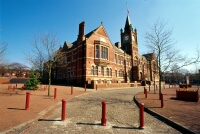 Dukinfield Town Hall was built in Domestic Gothic Style. It was opened on 15th June 1901 by Alderman James Pickup, and cost £15,000 to erect from plans by J. Eaton and Sons of Ashton.
Dukinfield Town Hall was built in Domestic Gothic Style. It was opened on 15th June 1901 by Alderman James Pickup, and cost £15,000 to erect from plans by J. Eaton and Sons of Ashton.The clock is by JR Joyce of Whitchurch, and the five bells were cast by Taylor and Co of Loughborough. Nowadays the town hall doubles as the borough register office and as a leisure centre.
Old Chapel, Dukinfield
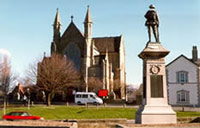 The first Old Chapel was started in 1707 and rebuilt in the mid-19th century, this is an early example of the adoption of a Gothic style for a nonconformist chapel. Behind it, there are several interesting graves, including the Astley memorial.
The first Old Chapel was started in 1707 and rebuilt in the mid-19th century, this is an early example of the adoption of a Gothic style for a nonconformist chapel. Behind it, there are several interesting graves, including the Astley memorial.The vertical design makes this building a notable landmark which dominates the skyline when viewed from Ashton.
The Chapel is a Grade II* listed building.
At the other side of Old Chapel is the Astley Arms where a dinner was held for Ensign Andrew Moyhihan V.C. on his return from the Crimea, and a blue plaque attests to the fact.
Old Hall Chapel
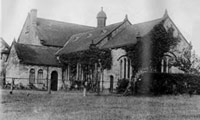 Old Hall Chapel is a Grade II* listed building but is now sadly in ruins. The Chapel claims to have been the first Independent church in England, in the 17th century. Built in the reign of Henry VII (1485 - 1509), it was extended in the 19th century to become a congregational church, and set alight by arsonists in 1978.
Old Hall Chapel is a Grade II* listed building but is now sadly in ruins. The Chapel claims to have been the first Independent church in England, in the 17th century. Built in the reign of Henry VII (1485 - 1509), it was extended in the 19th century to become a congregational church, and set alight by arsonists in 1978.
